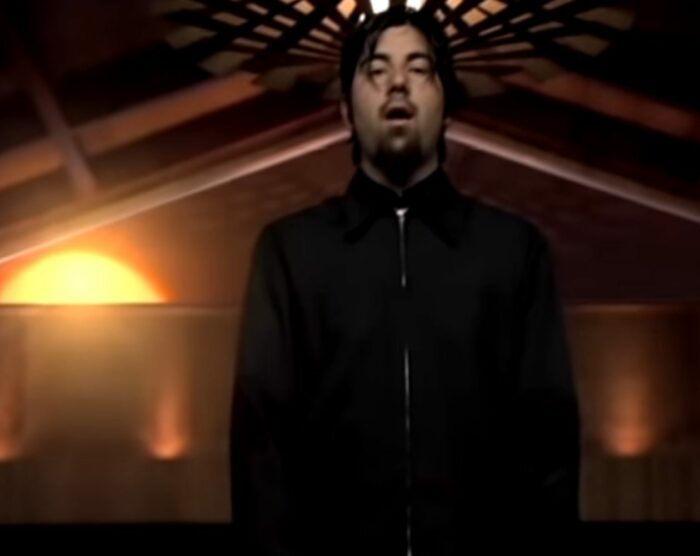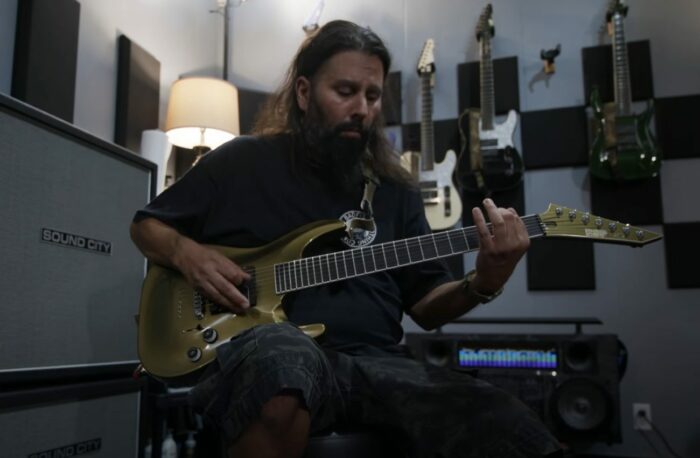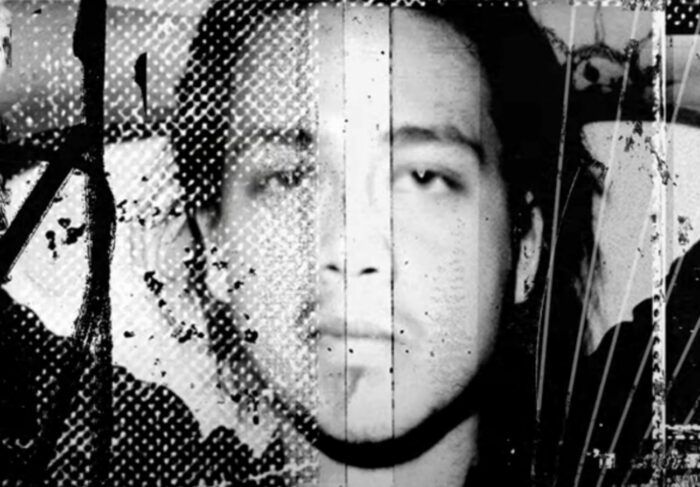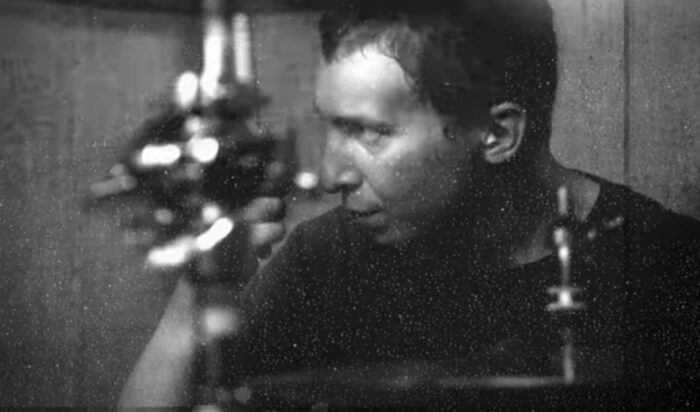Evolution is never more apparent than on Around the Fur by the Deftones. It could be called a coming-of-age album as the Sacramento, California quartet grew into the sound that would define their career. In addition, the music they created elevated the heavy metal genre in ways that can’t be overstated.
On Around the Fur the Deftones proved heavy metal can be emotionally expressive. Not simply a single feeling per song, they presented a spectrum throughout entire tracks. Though often brutally expressed, there’s a depth to the aggression so many metal acts lack. With instruments providing caustic, energetic grooves the Deftones crafted something truly unique. Still fresh twenty-five years later, Around the Fur is the ugliness in beauty and the soft side brutality is hiding.
The band’s second album, this record cemented their style. Soothingly abrasive, duality is a consistent aspect of any Deftones song. Even tracks dripping with audio acid possess vulnerable lyrical content. Some songs take off like rocket skates accelerating straight to the butcher’s block, while others float through dreamy realms. Ethereal elements lighten the air just before concrete riffs hit hard. Tonal complexity abounds throughout, and as such, listening to Around the Fur is an affecting journey.
Any ear snaps to attention the second the snare hits in the opening of the first track, “My Own Summer (Shove It).” Guitarist Stephen Carpenter then builds tension with a circling shark riff before vocalist Chino Moreno creeps in with a whispered, “Hey you…” Sharp then soft, by the time the chorus arrives, the nerves are a coiled spring ready to pounce, and the band accommodates by surging into pure metal ferocity. Yet, even in the midst of extremes, the vocals pull back from banshee shrieks to clean and clear. As the song closes, instruments rage while Moreno calmly croons, “I think God is moving its tongue. There’s no crowd in the streets and no sun in my own summer.”
The meaning of such lyrics is wonderfully open to interpretation. Around the Fur embodies the Deftones’ tendency towards enigmatic expression. Far from spoon feeding feeling, lyrics on the title track like “climb back down from the floor” take listeners into a dream they need to interpret. However, the way in which they’re sung is, perhaps, more important than the words themselves. Since listeners are rarely given explicit statements it’s mostly the emotion in Moreno’s voice conveying an intended feeling.
At times, songs like “Lhabia” and “Headup” are filled with barely comprehensible lines. Whether whispered or slurred in a menacing rush, they come across as the frenetic jabbering of an overwrought soul spilling its guts. This stream of consciousness quality possesses the flavor of jazz poetry as if Around the Fur is full of lines improvised in an instant. As a singer, Moreno almost seems to be speaking in tongues, every syllable inspired in the moment by the music.

That’s what makes the rest of the ensemble so critical. Drummer Abe Cunningham doesn’t bring a predictable machine gun to the fight. Instead of blast beat barrages, he utilizes grooves more akin to hip-hop than metal. Although this makes his drumming lighter in comparison to the heavier tone of Carpenter’s drop tuned guitar, those precise hammer blows nail the beat in a way that gives songs bounce.
Bassist Chi Cheng, who passed away in 2013, adds deep-toned emphasis to that rhythm. It’s like Cunningham is offering the groove and Cheng is demanding the listener move. Furthermore, whatever lightness there may be in the drumming, the bass erases. This blend of tonal colors—thunder and groove, light and heavy—became a definitive element of every subsequent Deftones album. Especially once guitarist Stephen Carpenter was added to the portrait.
Carpenter rides in on drop tuned riffs crackling with distortion. While that may seem like Modern Metal 101, his rhythmic choices stray far from the snoring trains of thrash. Like Dimebag Darrell, Carpenter composes heavy grooves emphasizing timing over speed. Though busy power chords can be heard on “Rickets” or “My Own Summer (Shove It)”, he’s never afraid to let notes ring out, like in “Mascara”, “Dai the Flu”, and “Be Quiet and Drive (Far Away)”, where even the most metal moments shimmer like glittering barbed wire.

What everyone in the band excels at is the building of tension. It’s a tug-o-war wrangling pure energy. The seeds of this aural push and pull are evident on Adrenaline, the Deftones’ first album. Consider a track off that record entitled “Engine No. 9”. Carpenter’s guitar snarls quick at the onset, while Cunningham pounds a restrained bounce beat. The two almost seem out of sync, or at the very least, on two different pages. That is until the surge at the chorus when all the instruments entangle in a sonic tsunami. Even if the impression is the musicians’ instruments trip one another up, it only adds to the melodic cacophony, particularly when Moreno’s vocals tie it all together.
Such seeds showed potential on that first album. However, they didn’t really blossom until the Deftones recorded Around the Fur and found their own sound. In many ways, it became an excellent example of the difference between style and voice.
Style is essentially any defining collection of characteristics which can help categorize something. Punk, post-modernism, impressionism—all are styles of artistic expression. Anyone can utilize their various elements to express an idea. However, certain artists have a voice which typically can’t be imitated without ripping off another creative. The same way Hunter S. Thompson’s writing is distinctly his own is the same as music by Depeche Mode or The Ramones. It doesn’t take much to recognize these artists, and anyone who outright copies them is simply a rip off. With Around the Fur the Deftones assembled a variety of styles—rap, metal, and new wave—into an expressive voice distinctly their own.
This is thanks in no small part to the band bringing back producer Terry Date. Famous for his work with the likes of Pantera, White Zombie, and Metal Church, the Deftones employed him while recording their first album. Unfortunately, on Adrenaline the band pushed Date for a sound that emulated other acts.
Stephen Carpenter once recalled how he asked the producer for a sound similar to Metal Church albums. Such choices gave Adrenaline fury but nothing terribly original at the time. Fortunately, when recording Around the Fur a different attitude prevailed. Now Carpenter and the others heeded the producer’s direction,“[Terry] told us that we should be considering going for that low end, bring a more bass-heavy sound. And when we got that, we were really excited.”
Still, it wasn’t just Date pushing them. If nothing else, he recognized their growing confidence, encouraging them to follow their own sound. Remembering that time, he said the Deftones “still had the hunger, but on ‘Around the Fur’ they had a little bit more consciousness of where they wanted to grow and how they wanted to become a bit more sophisticated.”

Chino Moreno has expressed how the band wanted a more dynamic sound. Rather than produce another raw garage rock audio assault, the Deftones found themselves craving something more polished to maximize their sound. Date’s experience allowed them to amalgamate the different aspects each brought into a lethal mudslide. Heavy yet warm, it can sludge along or move frighteningly quick and often hits harder than one expects.
Confident with what they wanted to do, on Around the Fur the Deftones more fully embraced influences outside of metal. The band is well-known for having diverse musical tastes. Chino Moreno has mentioned he likes to explore an artist’s whole discography even if it means finding just one song he enjoys. Abe Cunningham has described himself as the biggest fan of Stewart Copeland from The Police. At the time of recording “Around the Fur” Carpenter and Moreno were both very much into Depeche Mode.
Helping such influences add further layers, the Deftones called in Frank Delgado. The keyboardist and turntablist lent his talents to tracks on their first album, so his return came naturally, and as such, following the recording of Around the Fur, Delgado became a permanent member of the band. His subtle inclusion of atmospheric elements completes the ethereal feel of the album, especially when rounding the closing track, “MX.”

Released on October 28, 1997, Around the Fur reached number 29 on the Billboard U.S. charts (and number 2 in the U.K.). The album eventually went platinum, selling a million copies. It’s safe to consider it a success by any measure. More importantly, perhaps, is that the quality of the album helped the band compose a course towards their next record, White Pony. The DNA from Around the Fur is present throughout, especially in tracks like “Digital Bath” which echoes “Mascara” the same way “Change (in the House of Flies)” mirrors “Be Quiet and Drive (Far Away)”.
Finding their musical identity and building on top of that has resulted in more than amazing music. The Deftones have influenced several artists over the years, and the legacy of their sound is apparent in a variety of acts. Keith Buckley, the leader singer of Every Time I Die, has cited the Deftones as an important influence. Courtney LaPlante has as well. Kadeem France from the band Loathe once referred to the Deftones as “a band that really helped us to grow and progress.” There are traces of Deftones’ DNA in works by Deafheaven, and The Weeknd also considers them an influence.
It all started with Around the Fur, twenty-five years ago. That’s why it’s important to revisit such records now and again. The fans already know how amazing the album is, but enough time has passed there are those too young to know about it offhand. Although the Deftones continue to put out records, they’ve evolved away from that sound, and unfortunately, not everyone is as casually inclined as Chino Moreno to sample an entire discography in search of one song. For those who don’t know yet, there’s an entire album waiting to wrap your soul in oily rags, kick-start a shoegaze blaze, and let you burn screaming with joy. It’s called Around the Fur.

